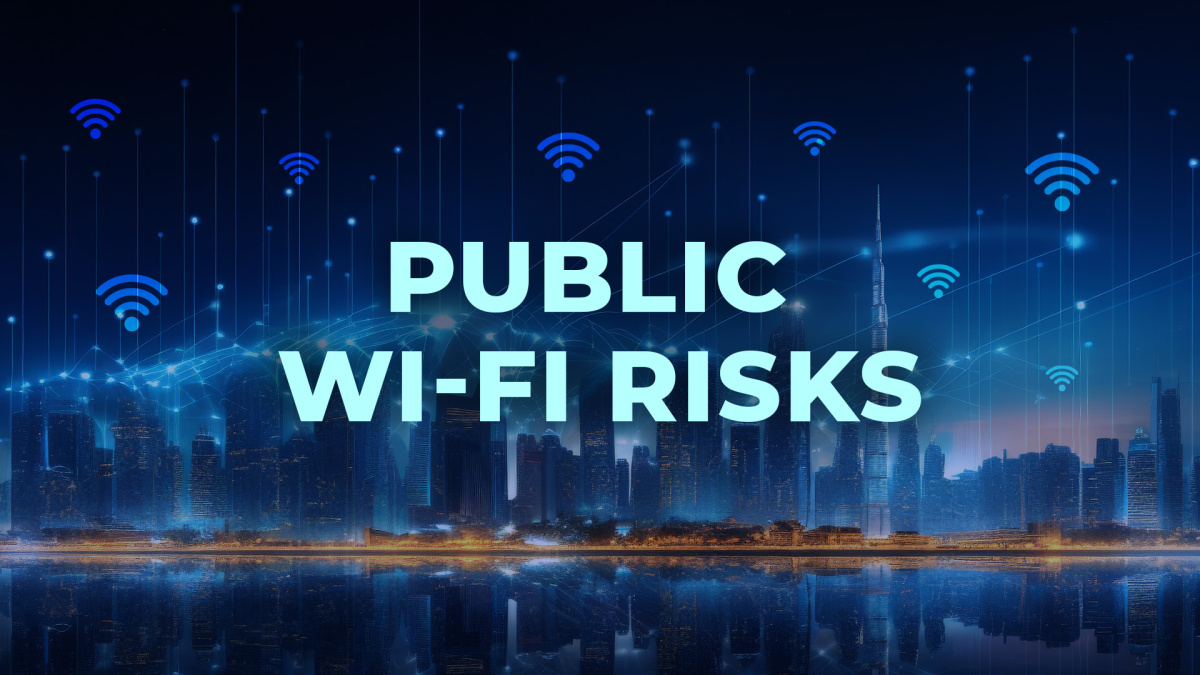Public Wi-Fi Risks: What You Should Know Before You Connect
Why Public Wi-Fi Is Dangerous
Free public Wi-Fi is everywhere — cafés, airports, hotels, and public transport. While it offers convenience, connecting to open networks can expose your personal data and digital identity to serious cybersecurity threats. But most public Wi-Fi networks are unsecured, meaning data sent through them is often unencrypted. This creates a perfect environment for cybercriminals to intercept your data, create fake networks to trick users into connecting, monitor your online activity or hijack your sessions to access apps or services without your consent
But what exactly is going on behind the scenes when you connect to public WI-FI? Let’s break down what’s at stake and how you can protect yourself.
What You’re Putting at Risk and How to Protect Yourself
When connected to unsafe public Wi-Fi, you risk exposing the following sensitive information to cybercriminals:
- Login credentials, including usernames and passwords
- Bank account details and financial information
- Corporate emails and confidential documents
- Messaging apps and two-factor authentication codes
- Physical location details and device data
It's important to remember that these risks aren’t limited to individuals — organizations can suffer data leaks, compliance violations, and financial loss if employees connect to unsafe networks. The good news? You don’t need to avoid public Wi-Fi completely, you just need to be cautious. Here’s how:
1. Use a VPN (Virtual Private Network)
A VPN encrypts your traffic, making it unreadable to anyone trying to intercept data on the network. This is one of the most effective ways to secure your connection to public Wi-Fi.
2. Disable Auto-Connect and Bluetooth/NFC
Hackers exploit automatic connections and active wireless adapters. Turning off auto-connect features and disabling Bluetooth or NFC when not in use can reduce your exposure.
3. Stick to Trusted Apps Only
Avoid downloading or using unknown apps on public networks. Use only trusted and verified applications to minimize risk.
4. Avoid Logging into Sensitive Accounts
Don’t check your bank account, corporate tools, or cloud drives on public Wi-Fi — unless you're using a secured, encrypted connection.
5. Use Devices with Enhanced Protection
Most commercial smartphones aren’t built for security. Consider using devices or operating systems designed with enhanced security features to block malware, tracking, and exploits like Protelion ArmoredMobile.
Don’t Trade Security for Convenience
Free Wi-Fi isn’t really free if it costs you your data. Whether you're a remote worker, business traveler, or just catching up on emails, don’t take risks on unsecured networks. Use secure tools, a VPN, or mobile devices with advanced security like ArmoredMobile to stay protected.
